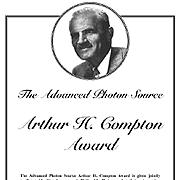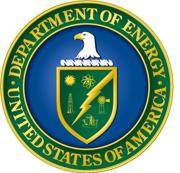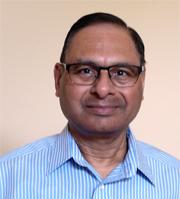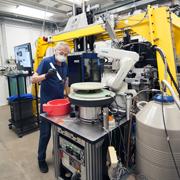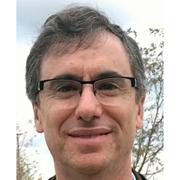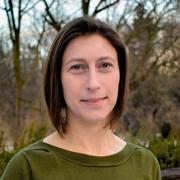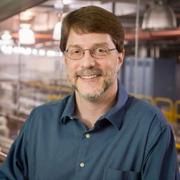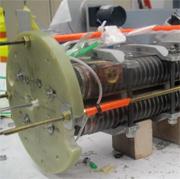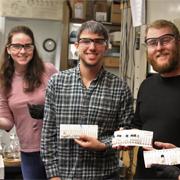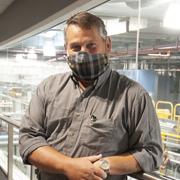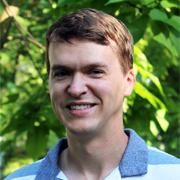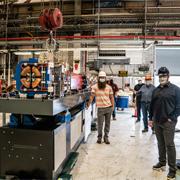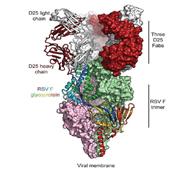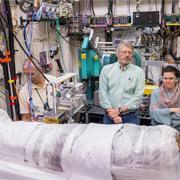News Feed - APS/User News
Three scientists who use the U.S. Department of Energy’s Advanced Photon Source at Argonne National Laboratory are recipients of prestigious Protein Society of America awards for 2021.
The Advanced Photon Source Users Organization (APSUO) announces that Mark Rivers and Stephen Sutton are the winners of the 2021 APSUO Arthur H. Compton Award, which recognizes an important scientific or technical accomplishment at the Advanced Photon Source.
Erica Ollmann Saphire, a long-time user of the U.S. Department of Energy’s Advanced Photon Source, has been appointed President and CEO of La Jolla Institute for Immunology. Dr. Saphire will become La Jolla Institute’s fifth president when she formally begins her term on September 1, 2021.
The U.S. Department of Energy-supported digital twin program will allow researchers to try out their experiments in a simulated version of scientific facilities, before ever setting foot in the real thing.
Jeremy Nudell has always enjoyed taking things apart and putting them back together. So it’s hard to imagine a more fitting job for him than the one he has: Nudell is a mechanical engineering specialist, helping to design and build a comprehensive upgrade to the Advanced Photon Source.
When it’s completed, the upgraded Advanced Photon Source storage ring will include 1,320 new magnets, each one up to five times stronger and much more precise than the ones currently in use, to focus and steer its electron beam. And Animesh Jain will have inspected every one of them.
Research at the U.S. Department of Energy’s Advanced Photon Source at Argonne National Laboratory has zeroed in on several molecules that could be used to create drugs to fight COVID-19.
Daniel Haskel, a senior physicist and group leader with the U.S. Department of Energy’s Advanced Photon Source at Argonne National Laboratory, is one of the 151 Outstanding Referees selected by the American Physical Society for 2021 who “…have demonstrated exceptional work in the assessment of manuscripts published in the Physical Review journals.”
Elina Kasman of the APS X-ray Science Division is a participant in the second cohort of PSE Next Generation of Leaders (NextGen Leaders), which provides the next generation of leaders with the tools and skills needed to coordinate research activities across Argonne’s multidisciplinary directorates and to build strategic programs.
A Wayne State University research team is collaborating with investigators from the Biophysics Collaborative Access Team at the U.S. Department of Energy’s Advanced Photon Source at Argonne National Laboratory and the Illinois Institute of Technology. The combined expertise of Bio-CAT and Wayne State U. will allow the team will use -ray diffraction to study how myosin changes position when living and beating heart muscles move.
Stephen Streiffer, deputy laboratory director for Science and Technology as well as interim associate laboratory director for Photon Services and interim director of the Advanced Photon Source, was 1 of a group of 5 recognized as part of the National Virtual Biotechnology Laboratory Team, which received a Secretary of Energy’s Achievement Award, for its pivotal role in supporting the national response to COVID-19.
With a powerful enough light, you can see things that people once thought would be impossible. A project that brought scientists at three U.S. Department of Energy national laboratories together has achieved an important milestone that has been in the works for more than 15 years: They have designed, built and fully tested a new state-of-the-art half-meter-long prototype magnet that meets the requirements for use in existing and future light source facilities.
On January 11, 2021, Argonne National Laboratory Deputy Laboratory Director for Science and Technology and Interim APS Director Stephen Streiffer joined John Williams to explain how our understanding and response to COVID-19 has moved forward so quickly, at the one-year anniversary of the SARS-CoV-2 genome release. And he shares insight into new strains of the coronavirus.
Graduate students at universities in North America are invited to apply to attend the 23rd National School on Neutron and X-ray Scattering, which will be held virtually at the U.S. Department of Energy's Argonne and Oak Ridge national laboratories from July 12 - 30, 2021. This school is designed to introduce students to the capabilities available at U.S. neutron and x-ray user facilities.
It’s 4 a.m. A loud alarm is blaring, accompanied by red strobe lights flashing. A stern voice announces, “Searching station B. Exit immediately.” It feels like an emergency, but it’s not. In fact, the alarm has already gone off 60 or 70 times today. It is a warning, letting everyone in the vicinity know I’m about to blast a high-powered X-ray beam [from the U.S. Department of Energy's Advanced Photon Source at Argonne National Laboratory] into a small room full of electronic equipment and plumes of vaporizing liquid nitrogen.
Safety in an environment like the one found at the Advanced Photon Source (APS) in the Argonne National Laboratory Photon Sciences Directorate (PSC) is an exacting science in the best of times. Mix in a pandemic such as the one we’re living through now and the degree of difficulty skyrockets. The safety experts assigned to PSC from the Argonne Environment, Safety, Health & Quality (ESHQ) Directorate are tasked with keeping staff, visiting researchers, and visitors of any kind safe. Meet the ESHQ/PSC safety team.
Jason Carter’s job, like many on the Advanced Photon Source (APS) Upgrade project, is about to get exciting. Carter is the lead vacuum engineer for the project, and after six years of designing and planning, his team is now preparing to actually build the complex vacuum system that will contain the powerful electron beam generated by the APS, a Department of Energy (DOE) Office of Science User Facility at Argonne National Laboratory. He’s excited, he says, to get out from behind the computer and start bringing his team’s part of the upgrade to life.
If you ever built a complex model out of LEGOs, you know the value of assembling parts of that model in pieces before attaching them to the whole. That same strategy is being used to upgrade the electron storage ring at the heart of the Advanced Photon Source, a U.S. Department of Energy Office of Science User Facility at Argonne National Laboratory.
More than a decade of virus research at the APS laid the groundwork for more effective COVID-19 vaccines and helped speed their rapid development.
Researchers from Northwestern University and the U.S. Department of Energy's (DOE's) Argonne National Laboratory used a new x-ray technique at the DOE's Advanced Photon Source to study the remains of a 1,900-year-old Egyptian girl — all without unraveling or damaging the mummy.


